Everything You Need to Know About Transit Levels

Everything You Need To Know About Transit Tools
Whether you’re involved in construction or land surveying, you must always have access to the correct tools in order to complete your daily tasks in an efficient and accurate way. One of the more vital devices involved in these fields is a
transit tool. Take a look at this guide and learn everything you need to know about this integral gadget and how it is used across various industries.

What Is a Transit Tool?
Transit tools are a type of optical instrument. Basically, this means that it is a device that processes waves of light in order to figure out specific properties of an image. This tool closely resembles a telescope that has been attached to a tripod. Professionals in fields like construction and surveying rely on this tool because it is considered incredibly precise, especially when creating a specific line of reference for a project.
What are the Uses of a Transit Level?
As mentioned, a level of this nature is typically used to establish reference lines. However, the uses go far beyond this function. The level also helps to pinpoint the positioning of objects and lines in relation to each other. The instrument is calibrated to allow a reading on both horizontal positioning and the inclination of angles. In the world of construction, transit tools offer precise readings that are integral to completing a project.
Basic Parts of a Transit Level
If you’re on the hunt for a useful
transit tool for sale, you may want to begin your journey by taking a closer look at the various components that comprise the instrument. The telescope is one of the more prominent features of the level and is responsible for magnifying the specific area that needs to be measured. The telescope is held in place by locking levers, which prevents wind or sudden movements from distorting the image or throwing off the readings. The level also features a detachable sunshade, which reduces the odds of intense sunlight obscuring the magnified image.
In order to take an accurate reading, it is important that the instrument remain level at all times. This is achieved by way of the graduated leveling vial. Also referred to as the spirit level, this component is often placed on the base of the device. The level is usually situated directly below or above the telescope, with a second spirit level located at the base of the instrument.
Horizontal Reading Components of Transit Levels
Beyond the basic features of the
transit level like the telescope and graduated leveling vial, there are also many other components to note. For example, the graduated horizontal circle is utilized for gaining insight into the readings of horizontal angles. The horizontal vernier scale, meanwhile, is meant to figure out angles that are too small to be determined by the main scale of the level. To keep the level in a horizontal position, the horizontal clamp screw must be used. To simplify the adjustment of the level’s position on a horizontal plane, the instrument also features a horizontal tangent screw.
Vertical Reading Components of Transit Levels
Though the instrument is exceptional when it comes to delivering precise readings on horizontal planes, there are also many features of this level that are meant to improve reading vertical angles. The graduated vertical circle handles this task in tandem with the vertical vernier scale, which improves the odds of reading smaller angles. Again, leveling screws are included with this instrument in order to hold it in place while taking vertical readings. The base-graduated leveling vial also helps with this task, keeping the base of the instrument securely in place.
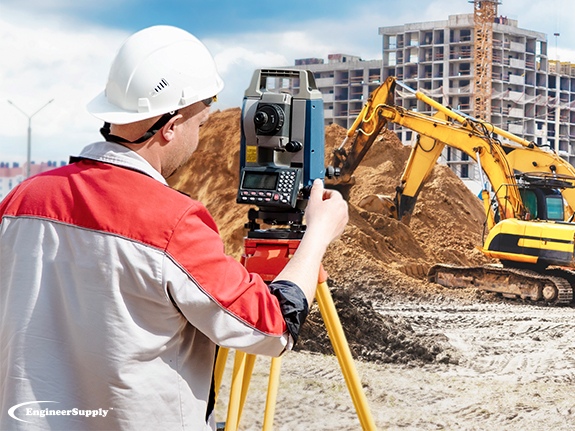
Elements of the Level’s Telescope
There are also a few parts to pay attention to when it comes to the telescope of the level. The focusing knob is attached to the device and is meant to act as a way of adjusting the clarity of the image in the scope’s field of view. At the edge of the telescope is the eyepiece, which you will look through in order to align the crosshairs with the object you are creating a reference line to. The eyepiece can be adjusted as well, which helps the crosshairs come into focus.
The Tripod
Using the correct tripod with your level will be key to your success. There are several factors to focus on in order to pick out a tripod that will meet the demands of your next job. For one, the option must be durable. Whether you’re surveying a parcel of land or you’re working on a complicated construction job, you can bet that you will be dealing with unpredictable conditions. By selecting a tripod that is made from durable materials, you can rest easy knowing that it will stand strong no matter what the conditions of your job site might be.
A quality tripod should also be stable. While the level itself comes with a variety of screws to keep the instrument securely in place, a wobbly tripod can throw off your entire experience. This is especially true if you are trying to survey terrain that is uneven or unstable. You may also find it helpful to pay attention to the tripod’s weight. If you need to cart the instrument around from one job to the next, a lightweight option will often prove the most useful. Anyone who travels frequently for work will find portable tripods the most beneficial.
The Setup
Understanding how to properly set up your instrument can also prove helpful. First, you need to mount the instrument to the tripod you have selected. Place the level on the head of the tripod, then use the included screws to secure the tool in position. If you’re working on a particularly bright or sunny day, be sure to remove the protective lens from the telescope before attaching the sunshade. While you shouldn’t rush the process, you will find that repeatedly setting the instrument up will make your experience faster over time.
How To Secure a Transit Level
While a
transit tool can be utilized for a variety of purposes, you still need to understand how to use the instrument in a basic way. After you have attached the level to the tripod, you want to place the device in a secure position where you need to take readings. Check to ensure that the tripod is stable before moving forward, especially if you are working on terrain that is questionable. You should also use this time to guarantee that the pieces holding the level and tripod together are secure.
Before moving to the next step, take a moment to look at each of the leveling screws included with your transit device. Basically, you want to ensure that the screws are not too tight. Loosen any screws that are pushed too hard against the base plate, as this can throw off your ability to take accurate readings.
How To Read a Transit Instrument
To begin using your transit instrument, you must first position the telescope in an appropriate way. To achieve this, look through the telescope and align the field of vision with a pair of leveling screws. Adjust the screws until the spirit vial provides indication that the level is even. Next, rotate two of the screws slightly at the same time. As you do this, you want to pay attention to the graduated spirit vial and take note of any movement that occurs. Professionals advise turning the screws with the thumb and forefinger, as this offers the most convenience.
After you have determined the first position and centered the level, gradually rotate the telescope until it is at an angle of 90 degrees. Follow the same pattern as before, adjusting the screws with your forefinger and thumb in order to center the bubble found within the level. Go back to the first position once more and ensure that the telescopic reading is still level. Finally, rotate the tool into a variety of positions in order to guarantee that all points are even.
Determining Your Level’s Focus
Another issue you might deal with while working with a transit instrument is focus. There will come times when you look through the eyepiece of your telescope and discover that the image is blurry or obscured in some capacity. Thankfully, this is not a difficult issue to resolve. In fact, it is quite normal to see a hazy image when you are using the level for the first time on a given day.
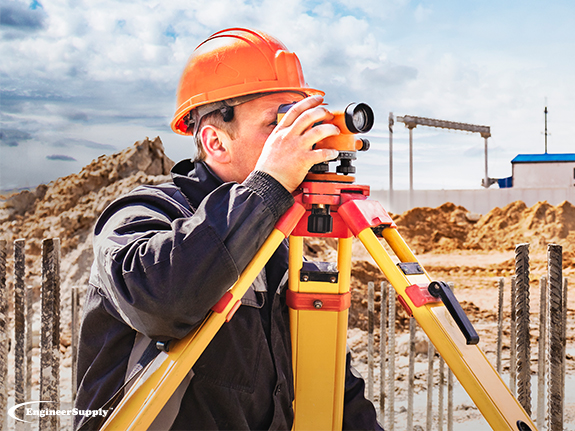
To resolve this problem, point the level’s telescope at any nearby object. Slowly rotate the eyepiece itself while looking at the object, which will help to give the image a bit more focus. With the telescope still aimed at the object, tweak the focus knobs on the level. Continue making adjustments with the knobs until the edges of the object are crisp.
Using Your Level for Reference Lines
One of the main functions of a transit instrument is establishing reference lines. In order to tackle this task, you will need to work with another person. One individual needs to peer through the telescope’s eyepiece. The other person then takes a tape measure and holds it in a vertical position at the point where the measurement will be taken. In most cases, you can either use an object with exact height to read the measurement or you can assume the height of a particular object and work from there.
Though the process seems simple, it can often prove a bit of a challenge to those who are not familiar with transit instruments. The more you learn about the tool, the easier the process will become.
Taking Proper Care of Your Transit Instrument
As with any tool that you rely on during your daily workflow, you want to be sure to handle your transit instrument with care. This means that you must always return the device to its storage case when it is not being used. Failing to do this increases the odds of the level being damaged due to local weather patterns or simple human error. Professionals also advise keeping the lens cap on the telescope when you are not actively taking a reading. This reduces the likelihood that the lens will become scratched.
You should also never lift the instrument by the telescope. The best way to transport the level from one point on a site to another is by picking it up by the base. Though this might seem like common sense, you should also avoid looking directly at bright light sources while peering through the telescope’s eyepiece. Attempting to look in the direction of the sun, for example, can cause major damage to your eyes. Professionals also recommend keeping both eyes open while using the telescope, as this reduces the odds of squinting and misreading the information the instrument provides.
Helpful Tips for Using Transit Levels
When determining if a surface is level, you need to make sure that you point the telescope in all directions. You will not be able to gain accurate measurements unless you have rotated the instrument a complete 360 degrees. You should also be mindful of how tight the leveling screws are. If the screws are tighter than they should be, the readings will be less accurate. What’s worse, tighter screws can push into the base plate of the device and cause damage to this component.
If you notice that the image is “jumping” while you’re looking through the telescope, you simply need to make tweaks to the focusing knob. A few adjustments will stabilize the image so that you can see it in a more precise manner. Additionally, try not to touch the tripod once you’ve begun using the instrument. Even a slight bump to the base of the instrument can result in inaccurate readings.

Frequently Asked Questions
Where Can I Purchase a Quality Transit Tool?
If you’re searching for the right transit tool for your next job, simply take a look at what Engineer Supply has to offer. Browse through the selection and review the details of various options in order to discover a fit that works for your exact needs.
What Are the Differences Between Optical Levels and Transit Levels?
Though there are several similarities between transit instruments and optical levels, the tools are often used for different purposes. Most professionals agree that transit instruments are the better choice when you are looking to take more than simple readings related to the elevation of even terrain.
Are Transit Levels Accurate Instruments?
Transit instruments are incredibly accurate. Of course, the readings you receive will come down to how you use the tool. Familiarize yourself with the exact model you invest in and get to know how it works before you try to use it on an active job site.
What Factors Are Most Important When Buying Transit Tools?
There are several key areas to pay attention to when you are looking to invest in new transit tools. Basically, you want to make sure that the device you purchase is capable of handling the tasks you wish to complete. Review the specs on various models to find an option that aligns with your goals.
Can Transit Levels Be Used To Shoot a Straight Line?
Yes, one of the main functions of a transit instrument is being able to shoot a straight line. Follow the basic instructions on how to create a reference line with your level and you will be able to determine how to best execute this function time and time again.
A transit tool is an important instrument used across a variety of professions. Take a look at the different models offered through Engineer Supply and discover a level that exceeds all of your expectations.
Best Transit Levels
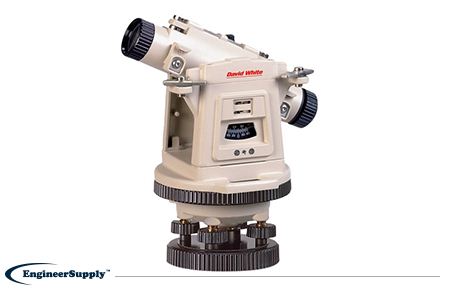
One of the most important factors to consider when it comes to picking out a level is accuracy. This means that you want to make sure you are investing in a piece of equipment that will deliver on this front. The David White LT8-300P is one such example. The design features a horizontal circle with lock and tangent. Additionally, it also has a vertical arc with lock and tangent. It can read up to 400 ft, which makes it an excellent fit for far-distance scenarios.
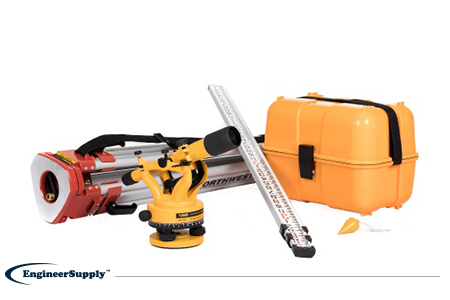
When it comes time to picking out a level, you want to make sure that you are picking one that will be simple to use right away. The Northwest Instrument Transit Level NSLP500B is a transit laser level that is specifically designed for ease of use. The level can be used for a variety of applications, meaning that it is a great fit for whatever you might be trying to achieve. Plus, the durable design of the level makes it an item you can trust in no matter what the demands of your next project might be.
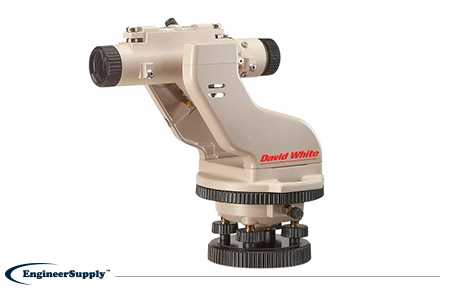
Visibility is incredibly important when it comes to the tool you pick to survey property. If you can’t see the readings on the device, then whatever you are being told will not be able to help you much. Thankfully, this is not an issue you will encounter with the David White LT8-300LTU-LP. Whether you’re looking to tackle vertical or horizontal sightings, this is a model that will be able to help you. The solid three-piece tool is as durable as it is useful and boasts a number of impressive features.
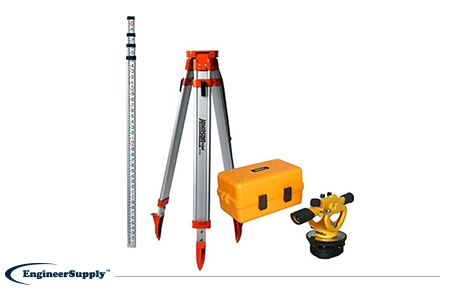
Whether you’re trying to dig out a foundation, install a patio, or add new floors to a building, you need to make sure that your transit level for sale is equipped for the job. From looking over the evenness of anything from curbs to fences, you can easily tackle whatever construction tasks are in front of you with the Johnson Level 22X Builder’s Transit Level. A durable and reliable tool that can be used with ease no matter how experienced you are with this type of item.
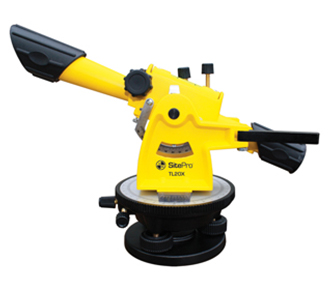
When you’re trying to complete a job, you want things to go as fast as possible without sacrificing quality. The SitePro 25-TL20X is a great example of an option that will deliver results right from the start. With a simple to use interface and built-in sunshade, there are a number of features that are sure to impress with this device. No matter how long you’ve been working in your industry, you can be sure that this is a great fit to consider.